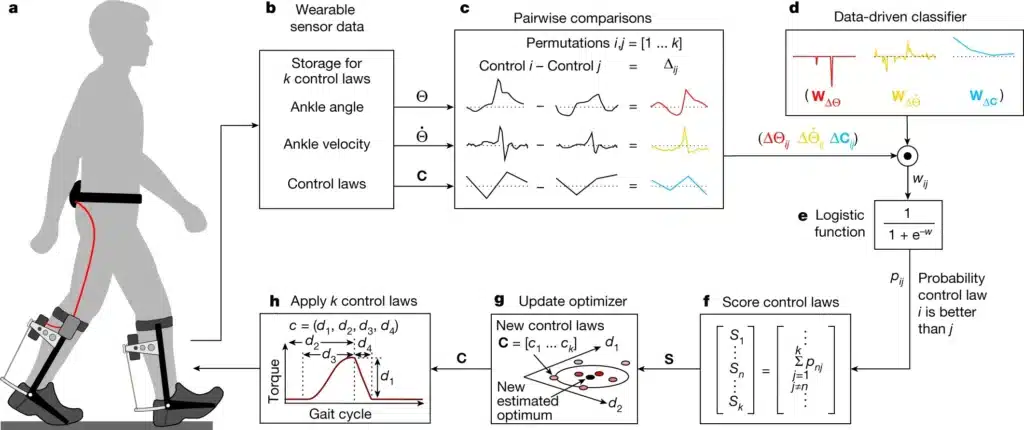For the first time ever, a boot-like exoskeleton designed to help the wearer walk and run faster and effortlessly is exiting the lab into the real world.
SteveCollins, who heads the Biomechatronics Laboratory at Stanford University, is enthusiastic: “Our device brings exceptional improvements in walking speed.
With his colleagues, Collins published a study in the journal Nature, I link it here.
How the robot boot works
The exoskeleton developed at Stanford works with the calf muscles to give the wearer an extra boost with every step. But, unlike other exoskeletons, the thrust is customized. An artificial intelligence trained with huge data sets “learns” the walk and adapts its work optimally.
This feature allows the boot to consume half the energy compared to its predecessors. The ultimate goal is to help people with mobility difficulties, especially the elderly, to move everywhere without problems: and these improvements bring commercialization ever closer.
“The very first moments with an exoskeleton can be a little tricky,” he says Ava Lakmazaheri, student of the Biomechatronics Laboratory who tested the exoskeleton.
It only takes 15 minutes, though, and everything feels natural. You literally have the feeling of having something extra. Like the boots of the seven leagues from the famous fable.

Energy-saving exoskeleton
If after 15 minutes walking becomes more fluid (the robot boot enhances the functions of the calf), within an hour "the magic" happens. It suddenly feels, the researchers say, as if “a 30-pound backpack is being lifted off our shoulders” (don't ask me what that means).
What happened: By measuring movement through sensors contained in the robot boots, the machine learning model determines how to best assist the person.
Results? The optimized assistance allowed people to walk 9% faster with 17% less energy compared to walking with normal boots. “It's the biggest increase we've ever gotten from an exoskeleton,” Collins says.
The next step for this contraption is to see what it can do for older adults and people with partial disabilities. Researchers also envision variants to improve balance and joint pain.
They have been perfecting these things in laboratories all over the world for 20 years, they weren't born yesterday. I think we are, though. Over the next 10 years, exoskeletons will be a widespread product.


